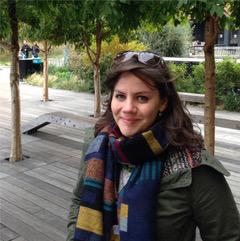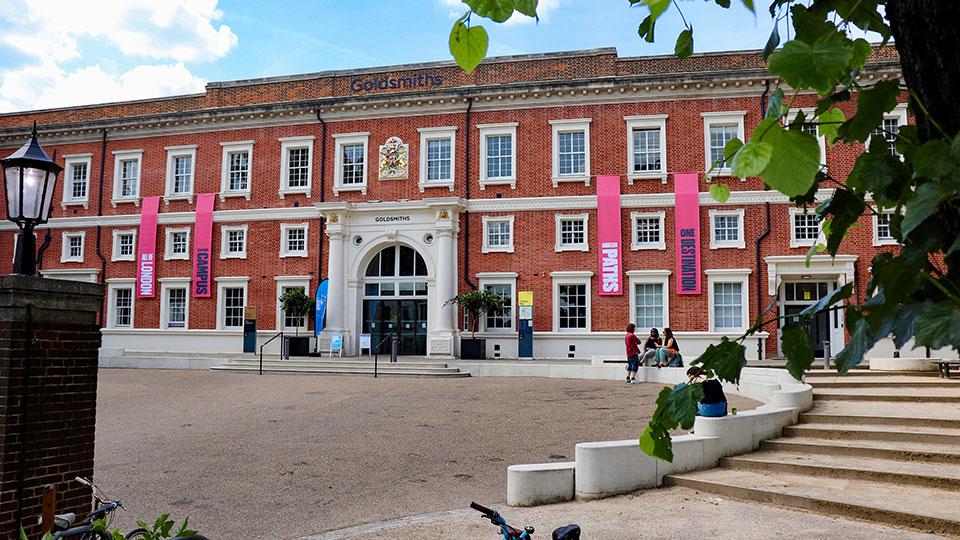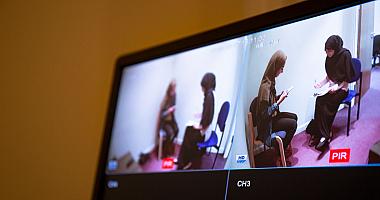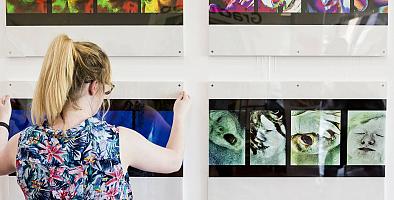MSc
Psychology of the Arts, Neuroaesthetics & Creativity
Content navigation menu
Why study MSc Psychology of the Arts, Neuroaesthetics & Creativity at Goldsmiths
This Masters is the first postgraduate programme in the world for the scientific study of aesthetics and creativity.
- The programme sits at the intersection of the arts and the sciences. It will introduce you to the psychology and the cognitive neuroscience of how humans generate new ideas, how we appreciate beauty, and how we form preferences.
- Aesthetic and creative decisions are relevant in the visual and the performing arts, and in many applied and commercial contexts – ranging from clinical interventions to curating exhibitions, and from dance choreography to marketing and advertising.
- Based in the Department of Psychology, in collaboration with Computing, Media, Communications and Cultural Studies and the Institute of Management Studies, the course builds critical knowledge, research and communication skills across the arts and the sciences, centred around two key topics: the psychological and brain mechanisms of making (creativity) and appreciating (neuroaesthetics) art.
- Conducting a research project with an interdisciplinary focus will prepare you for a research career in aesthetic or creative science, working in the creative industry, or to develop your artistic practice.
Contact the department
If you have specific questions about the degree, contact Dr Rebecca Chamberlain (Programme Director) or Dr Stacey Humphries (Programme Director).
Length
1 year full-time or 2 years part-time
Fees
Home - full-time: £11170
Home - part-time: £5585
International - full-time: £18560
Department
Combining the arts and sciences
Goldsmiths is uniquely placed to offer this programme, with an internationally renowned reputation in the arts and the sciences.
Existing courses combining art and psychology often have a largely therapeutic focus and rarely cover the psychology of aesthetic appreciation or creative cognition, in a broader profile. In contrast, business-oriented courses in marketing, advertising and consumer psychology often lack adequate scientific training in experimental psychology or cognitive neuroscience methods, which is required for a scientific approach to aesthetics and creativity.
On this Masters at Goldsmiths you will have the opportunity to take optional modules covering computing, media and communications, and management studies. This will complement and challenge the scientific perspective, acknowledging the richly diverse, unique and culturally specific nature of human aesthetic and creative practice.
What you'll study
You will study the following compulsory modules:
| Module title | Credits |
|---|---|
| Aesthetic Science | 15 credits |
| Creativity | 15 credits |
| Statistical Methods | 15 credits |
| Research Skills | 15 credits |
| Research Design and Analysis | 15 credits |
| Foundations of Neuroscience | 15 credits |
| Research Project | 60 Credits |
Teaching style
This programme is taught through a mixture of lectures, seminars, lab classes and tutorials.
Students from the course have created their own website where they're sharing examples of their work and their thoughts about the neural correlates of aesthetic experiences and creative actions.
Careers
The course provides a unique combination of scientific methods and psychological theory on the one hand, and principles of aesthetic and creative practice on the other. It will equip you with a unique skill set that will allow you to bridge the arts and the sciences.
As a graduate of this course, you will be especially suitable for a career in advertising (planning and strategy), curating or arts management. Neuroscientific methods and theories of aesthetic or creative science are not normally taught in other courses on, for example, consumer psychology, arts management, curating or arts-based therapy. Based on the combination of scientific methods with interdisciplinary knowledge in aesthetic and creative practice, you will have a unique advantage in applying for jobs at the intersection of the arts and sciences.
Examples include:
- Doing a PhD in the growing international research field of creative science and (neuro)aesthetics
- Working in the creative industries – for example, advertising, market research, brand strategy and consulting
- Arts management and curating, arts education, or even as research-focussed preparation for art-based clinical interventions and therapy
Skills
You will develop key skills as part of the programme, including:
- Academic research skills
- Skills in statistical methods and experimental design
- Quantitative and qualitative data analysis
- Critical thinking
- Evaluation methods and skills
- Independent study skills
- Presentation skills
Research at Goldsmiths
Do artists perceive the world differently? – Dr Rebecca Chamberlain
Entry requirements
You should normally have (or expect to be awarded) an undergraduate degree of at least upper second class in psychology or a related subject (cognitive science, neuroscience) with a research component. However, we explicitly encourage candidates with interdisciplinary and unusual biographies to apply. Applicants with undergraduate degrees in the visual or performing arts, design, humanities, business, or other non-scientific subjects will be required to demonstrate sufficient background knowledge and experience with psychological or cognitive neuroscience approaches, including statistics. Please contact the programme leader directly if you are unsure as to whether you would qualify for this programme.
As well as the degree requirement above, it is also necessary to have sufficient knowledge of statistics and experimental design to apply for our programme. Many applicants for this course would arrive with a psychology undergraduate degree where the statistics topics would have been covered extensively across three years. Students entering the MSc programme are assumed to have a good knowledge of experimental design, sampling, descriptive statistics, t-tests, ANOVA, correlation, and regression. These fundamental topics won’t be covered in our statistics and experimental design lectures. This leaves room to cover more advanced topics that you will need for writing lab reports across the year and your final project. For candidates with little or no statistical knowledge, we do offer a boot camp that covers more basic statistical tests. This intensive course takes place in the summer.
However, students with little experience in neuroscience/statistical methods should engage with the suggested reading listed below and/or complete a basic statistics course on a platform such as Coursera or Datalab prior to applying so that they can demonstrate sufficient statistical background to enter the programme. Applicants can also engage with learning statistics with jamovi, which introduces many of the statistical concepts covered in the programme as well as the statistical software students will be using.
International qualifications
We accept a wide range of international qualifications. Find out more about the qualifications we accept from around the world.
If English isn’t your first language, you will need an IELTS score (or equivalent English language qualification) of 6.5 with a 6.5 in writing and no element lower than 6.0 to study this programme. If you need assistance with your English language, we offer a range of courses that can help prepare you for postgraduate study.
Fees and funding
Annual tuition fees
These are the PG fees for students starting their programme in the 2024/2025 academic year.
- Home - full-time: £11170
- Home - part-time: £5585
- International - full-time: £18560
If your fees are not listed here, please check our postgraduate fees guidance or contact the Fees Office, who can also advise you about how to pay your fees.
It’s not currently possible for international students to study part-time under a student visa. If you think you might be eligible to study part-time while being on another visa type, please contact our Admissions Team for more information.
If you are looking to pay your fees please see our guide to making a payment.
Funding opportunities
Explore the Goldsmiths scholarships finder to find out what funding you may be eligible for.
If you are a UK student you may be eligible for a postgraduate loan.
Meanwhile our Careers Service can also offer advice on finding work during your studies.
Paying your fees
Find out about paying your tuition fees.
Additional costs
In addition to your tuition fees, you'll be responsible for any additional costs associated with your course, such as buying stationery and paying for photocopying. You can find out more about what you need to budget for on our study costs page.
There may also be specific additional costs associated with your programme. This can include things like paying for field trips or specialist materials for your assignments. Please check the programme specification for more information.
How to apply
You apply directly to Goldsmiths using our online application system.
To complete your application, you will need to have:
- Details of your academic qualifications
- The email address of your referee who we can request a reference from, or alternatively a copy of your academic reference
- Copies of your educational transcripts or certificates
- A personal statement
You'll be able to save your progress at any point and return to your application by logging in using your username/email and password.
Read our guide to applying for a postgraduate degree at Goldsmiths.
Other staff that teach on the programme are:
Suggested reading
Acquainting yourself with some of the recommended reading below will equip you well for the interview and for the course in general.
Aesthetic science and creative cognition
- Skov, M., & Nadal, M. (Eds.). (2023). The Routledge international handbook of neuroaesthetics. Routledge, Taylor & Francis Group.
- Chatterjee, A., & Cardilo, E. (Eds.). (2021). Brain, beauty, and art: Essays bringing neuroaesthetics into focus. Oxford University Press.
- Nadal, M., & Vartanian, O. (2022). The Oxford handbook of empirical aesthetics. Oxford University Press.
- Winner, Ellen (2018). How art works: a psychological exploration. Oxford University Press
- Chatterjee, Anjan (2014). The Aesthetic Brain. Oxford University Press
Neuroscience and research methods
Foundations of neuroscience
- Ward, J. (2006). The Student's Guide to Cognitive Neuroscience. Psychology Press.
Experimental design and statistics
- Field, A. & Hole, G. (2007). How to Design and Report Experiments. Sage.
- Field, A. (2012). Discovering Statistics Using R (2nd ed). Sage.








